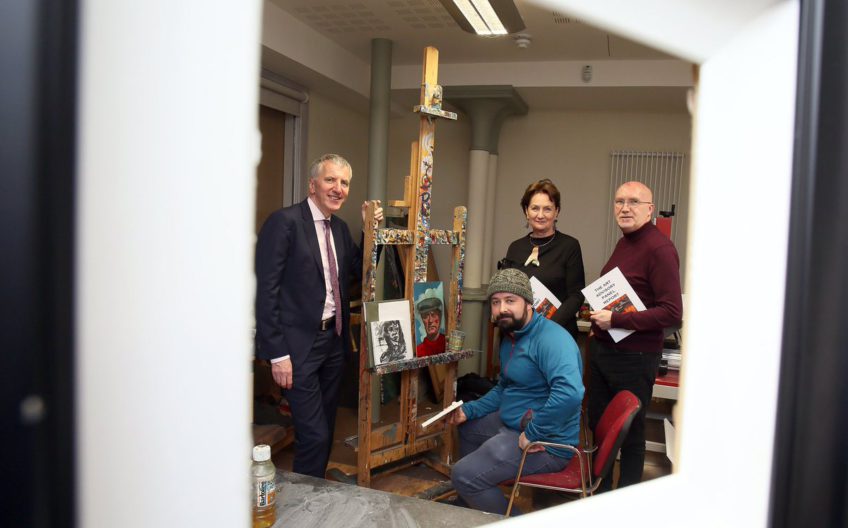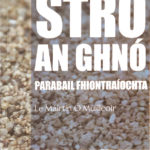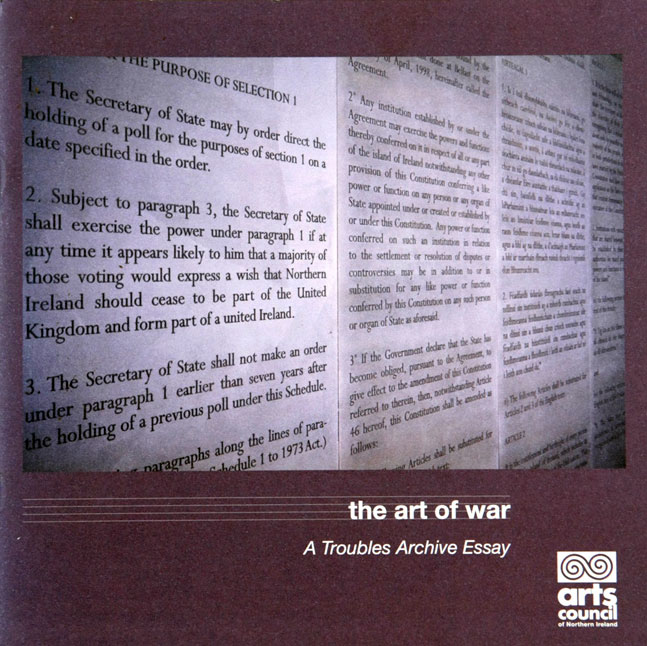
One per cent for art: Transforming our public places with great art
Per Cent for Art is a programme whereby one per cent of capital expenditure is set aside by government bodies for art. It fosters a blossoming of great art, provides work for artists, and creates an arts dividend which builds healthy communities and drives economic growth.
Increasingly, the economic potential of art is being recognised: Culture counts when investors are making crucial decisions about where they will locate. Economic success is directly linked to cultural excellence.
Art has always been central to the Irish way of life, is key to our belief in providing bread AND roses, and has always captured our revolutionary spirit — not least in the Poets’ Revolution of 1916.
Supporting excellent arts which are accessible to all and promote community solidarity, reconciliation and shared prosperity is a cornerstone of good government.
As Chair of the Procurement Board and Minister of Finance, I have seized the opportunity to lead the biggest investment in arts for a generation by reintroducing a one per cent for art policy.
These funds won’t come from the everyday government spend on services but from our capital budgets which are set to grow by 15 per cent in the coming period.
When FDR introduced his New Deal in America, he said he believed that he would be remembered more for the artworks he commissioned and work he gave artists than for his big infrastructure projects. It’s time we understood that our artists need commissions to survive and thrive here.
There has been a per cent for art scheme in the South since 1984. In Cork, seen as the exemplar of the scheme, the artist is embedded with the developer. “The commissions awarded offered opportunities for artists to earn income at a time when the economy was in difficulties…It assisted artists to work and live in Cork,” explains a report into the programme.
The most progressive advocates of diverse and shared and successful cities argue that cities and regions with strong art foundations attract global talent and encourage the diversity international tech investors crave. Of course, a strong arts scene also counteracts the efforts of those who wish to live in the past or hold back inclusion and diversity. It will give us a transformed cultural profile attractive to those who embrace change and a modern, shared society breaking with a past which suffocated difference.
Artists can help architects and designers create imaginative environments that reflect local identity and meet communities’ needs. Some of my favourite examples are the Peace Bridge in Derry and the Aisling an Phobail artwork at Beechmount by Irish American artist Brian O’Doherty/Patrick Ireland. The joyful artworks throughout the new NI Hospice created by their artist-in-residence and the Bobby Sands mural both reflect the redemptive power of art.
Any art encouraged under a new One Per Cent for Art programme should aim to provide work to local artists and focus on truly excellent art which is accessible to communities.
Michael Bloomberg, former mayor of New York City, writes: “This tradition of excellence in urban design recognises the distinctive role that public art plays in humanising our communities and in changing the way we interact with our surroundings.” He adds: “This unique collaboration between artists and communities is a body of artwork that is both approachable and engaging. Above all, it is art for the public.”
Per cent for art programmes must be linked to local employment and empowerment as well as community uplift. The works we wish to create, regardless of form would aim to be creative, beautiful, joyful and engaging.
Artist Conrad Atkinson, banned from the Ulster Museum in 1977 for his Bloody Sunday work, is a strong advocate of culture and arts as a driver of positive societies. He writes: “Be creative and welcome change and change will reward you.”
Ireland’s greatest visual artist Robert Ballagh says:
“The percent scheme for arts is a powerful way for society to provide support and employment for artists but it also provides an opportunity for the general public to access art in public places.”
That’s a view echoed by Terry George, Belfast director of Hotel Rwanda:
“Ireland’s international investment and tourism potential is greatly enhanced by the success of its artists and actors, poets and musicians. Percent for Art will usher in a new era for investment in public artworks which can only boost our reputation as a society which fosters creativity and respects the artist. That’s the type of society which smart investors want and tourists crave.”
I believe the steps I have taken to make Per Cent for Art a reality in all government new-build will usher in a new, bright era for the arts — and for the community — here.
Press Release
Speaking on Friday past after chairing his last meeting of the Central Procurement Directorate Board as Finance Minister, Máirtín Ó Muilleoir welcomed agreement to introduce the per cent for art policy into all new government buildings.
He said: “Best practice in Europe and the US has been to embed the work of artists in infrastructure developments. In that way, we invest in art and in artists, creating successful and vibrant communities which celebrate culture.
“Exciting public art is a cornerstone of the great cities of Europe and helps to enhance and uplift great buildings.
“Through our capital spend, we will now foster a blossoming of great art, provides work for artists, and creates an arts dividend which builds healthy communities and drives economic growth.”



